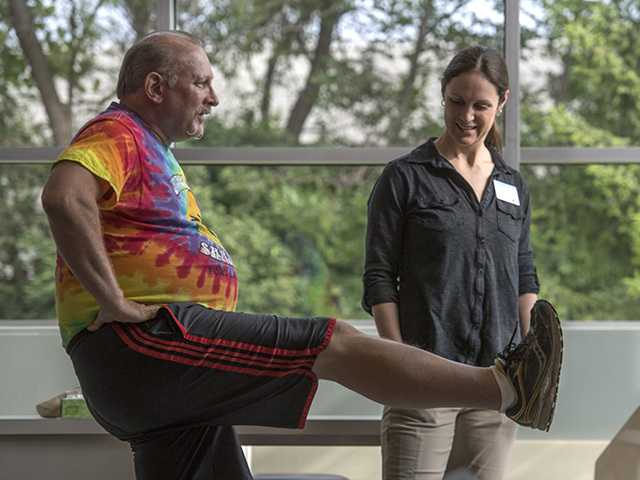Accelerate the Rehabilitation Process

Physical injuries or surgeries can be quite debilitating, often impeding our ability to engage in daily activities and diminishing our quality of life. Thankfully, the field of physical therapy offers a range of techniques that can accelerate the rehabilitation process, enabling individuals to regain strength, mobility, and function more swiftly. In this blog post, we’ll delve into some effective physical therapy techniques that have proven to expedite the recovery journey.
Early Mobilization and Active Range of Motion Exercises
One of the cornerstones of accelerated rehabilitation is early mobilization. It involves getting patients up and moving as soon as possible after an injury or surgery. By initiating gentle movements, patients can prevent muscle atrophy and joint stiffness, which are common setbacks during periods of immobility. Active range of motion exercises help restore flexibility and strength to injured muscles and joints, promoting faster healing.
Manual Therapy and Soft Tissue Techniques
Manual therapy techniques, including joint mobilizations and manipulations, can greatly aid in accelerating rehabilitation. Skilled therapists use their hands to restore proper joint alignment, improve circulation, and reduce pain. Soft tissue techniques, such as massage and myofascial release, target tight or scarred muscles, enhancing blood flow and aiding in the breakdown of adhesions. These therapies not only expedite healing but also contribute to pain relief and improved functional outcomes.
Functional Electrical Stimulation (FES)
Functional Electrical Stimulation (FES) is a cutting-edge technique that utilizes electrical currents to stimulate muscles and nerves. This technique is particularly useful for patients with neuromuscular conditions or those recovering from paralysis. By activating muscles that may not be responding effectively, FES helps prevent muscle atrophy, maintains range of motion, and enhances muscle strength, ultimately speeding up the recovery process.
Aquatic Therapy
Water-based exercises offer a low-impact yet highly effective approach to rehabilitation. Aquatic therapy takes advantage of the buoyancy of water to reduce stress on joints while providing resistance to muscle groups. This technique is especially beneficial for individuals with weight-bearing restrictions or orthopedic injuries. The natural resistance of water facilitates muscle strengthening and joint mobility, allowing patients to engage in movements that might be challenging on land.
Neuromuscular Reeducation
Injuries can disrupt the brain’s communication with muscles, leading to coordination issues and impaired movement patterns. Neuromuscular reeducation focuses on restoring these connections through targeted exercises and movements. Therapists guide patients through activities that retrain the brain and muscles to work together, facilitating smoother, more coordinated movements. This technique is instrumental in regaining functional independence after an injury.
Eccentric Training
Eccentric training involves focusing on the lengthening phase of muscle contractions, which is often neglected during conventional strength training. This technique has gained prominence in rehabilitation programs due to its ability to enhance muscle and tendon resilience. By stressing tissues in a controlled manner during the lengthening phase, eccentric training promotes collagen synthesis and tissue remodeling, expediting the healing of injured muscles and tendons.

Virtual Reality (VR) Rehabilitation
The integration of technology into physical therapy has given rise to innovative approaches, such as virtual reality rehabilitation. VR systems create immersive environments that engage patients in therapeutic activities while keeping them motivated. This technique is particularly advantageous for individuals relearning movements after a stroke or other neurological conditions. VR rehabilitation enhances both the physical and cognitive aspects of recovery, leading to accelerated progress. Want to learn more about the rehabilitation process? You can learn from this source!
Conclusion
Physical therapy techniques have evolved significantly over the years, enabling healthcare professionals to devise strategies that expedite the rehabilitation process. From early mobilization and manual therapy to cutting-edge approaches like functional electrical stimulation and virtual reality rehabilitation, there’s a diverse array of methods to accelerate recovery. While the choice of technique depends on the specific injury and individual needs, the overarching goal remains the same: to help patients regain their strength, and mobility, and function as swiftly and effectively as possible. If you or a loved one are on a rehabilitation journey, consulting with a skilled physical therapist who employs these techniques could make a substantial difference in achieving a faster and more comprehensive recovery.

